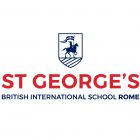Roma Anni Trenta: La Galleria d'Arte Moderna e le Quadriennali d'Arte 1931-1935-1939.
Andy Devane
24 March-30 Oct. Rome’s municipal modern art gallery on Via Francesco Crispi stages an exhibition dedicated to the first three editions of the Quadriennale di Roma, a series of major shows to promote prevailing trends in contemporary Italian art during the 1930s. Some 120 works, including paintings, sculpture and prints, are displayed alongside archive documents and footage from the Istituto Luce, providing a cultural, urban and architectural insight into the capital during the fascist era.
Intense artistic activity
Spearheaded by Rome painter Cipriano Oppo (1891-1962) the first three Quadriennali were held at the Palazzo delle Esposizioni on Via Nazionale in 1931, 1935 and 1939. This was no ordinary moment for the arts in Italy – Mussolini intended to harness modern art to evoke Rome's glorious past as a foundation for Italy's national identity. The regime provided ample funds to purchase art works for state collections, as well as commissioning art, fuelling a decade of intense activity for Italian artists.
Galleria Mussolini
These Quadriennali were pivotal events in the history of the city's public art collections with almost 1,300 works purchased, 400 of which made their way to the Galleria d'Arte Moderna di Roma Capitale. Established at Palazzo Caffarelli on the Capitoline hill in 1925, the gallery was renamed in 1931 as Galleria Mussolini and was central to the Duce's plans to make Rome a centre for culture and modern art.

Quadriennali artists
The first Quadriennale in 1931 represented a generation of well-established artists in their 50s while the 1935 fair was considered the most progressive, featuring work by young artists who had just turned 25. The third Quadriennale was less adventurous, top-heavy with Futurist works – a movement with strong ties to the fascist regime – and overshadowed by a climate of war.
Scipione masterpiece
A highlight of the exhibition is Il Cardinale Decano (1930) by Gino Bonicchi, better known as Scipione, who died from tuberculosis in 1933 aged 29. Oppo paid special homage to the deceased artist by holding a posthumous exhibition of his works at the 1935 Quadriennale. There is little holy in Scipione's striking portrait of the scowling Cardinal Vincenzo Vannutelli, enthroned in a dimly-lit St Peter's Square, a symbolic, expressionist work conjuring a vision closer to hell than heaven.

Scuola Romana
Alongside Mario Mafai and Antonietta Raphaël, Scipione was a founding member of the Scuola Romana which is represented in the exhibition by numerous works including Mafai’s Donne che si spogliano (1934), a painting of two women struggling to undress while an ominous shadow lurks in the background.
The Italians in Paris section contains works by Gino Severini, Alberto Savinio, Massimo Campigli, Filippo De Pisis, as well as Giorgio de Chirico, who Mussolini barred from the first Quadriennale as punishment after the metaphysical master publicly described Italian art as “narrow-minded.”
Italy's 20th-century artists
In addition to paintings by important 20th-century Italian artists such as Afro, Felice Casorati, Antonio Donghi, Renato Guttoso, and sculpture by Marino Marini, the show contains the well-known La famiglia del pastore by modernist artist Mario Sironi, a desolate scene of a family in a barren landscape, exhibited at the 1931 fair.

The exhibition provides an interesting overview of the Italian art scene of the 1930s, set within the context of the fascist regime's vision of a resurgent Rome.
General Info
View on Map
Review of the month: Roma Anni Trenta
Galleria d'Arte Moderna di Roma Capitale, Via Francesco Crispi 24, tel. 060608.




















